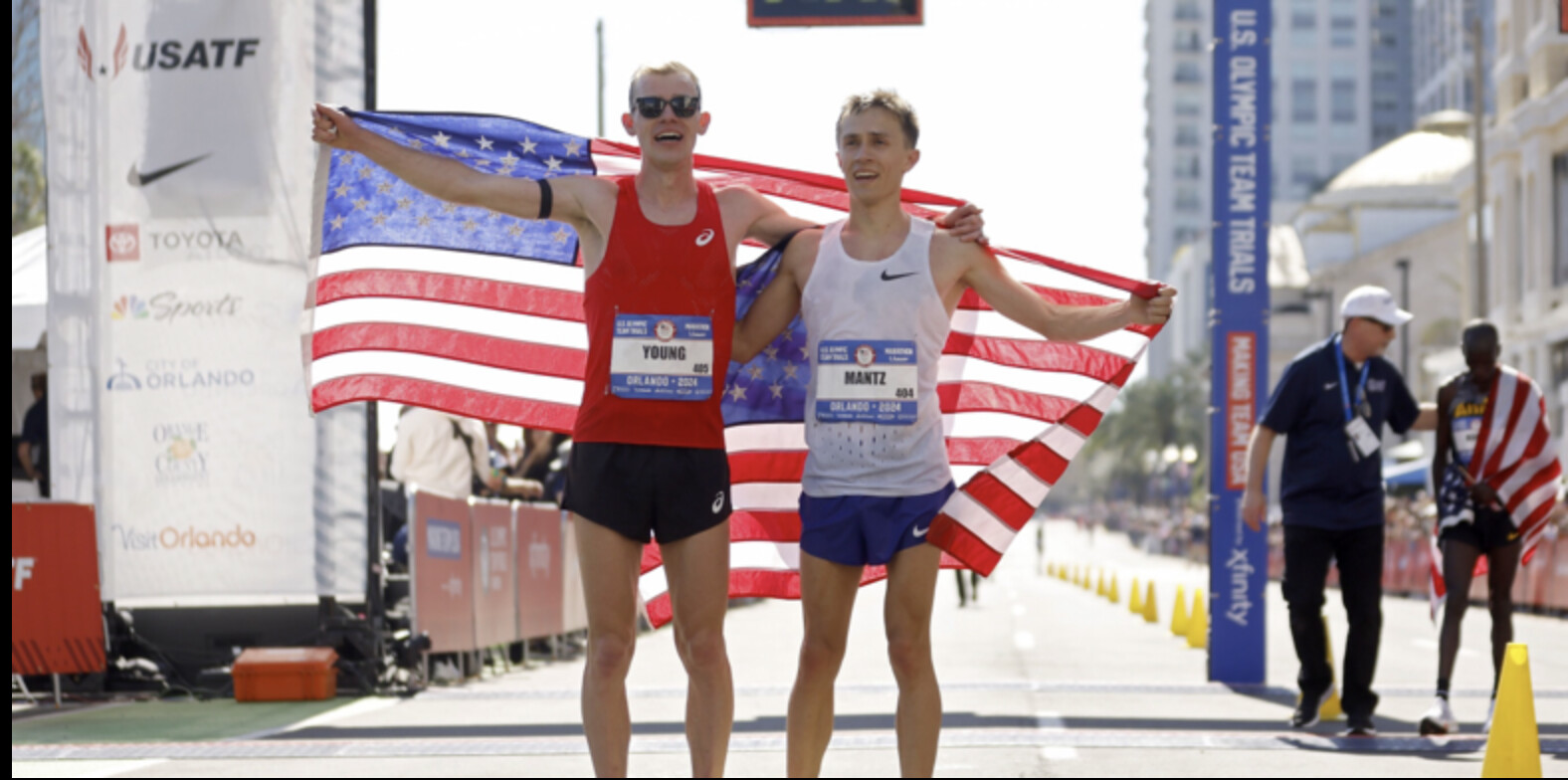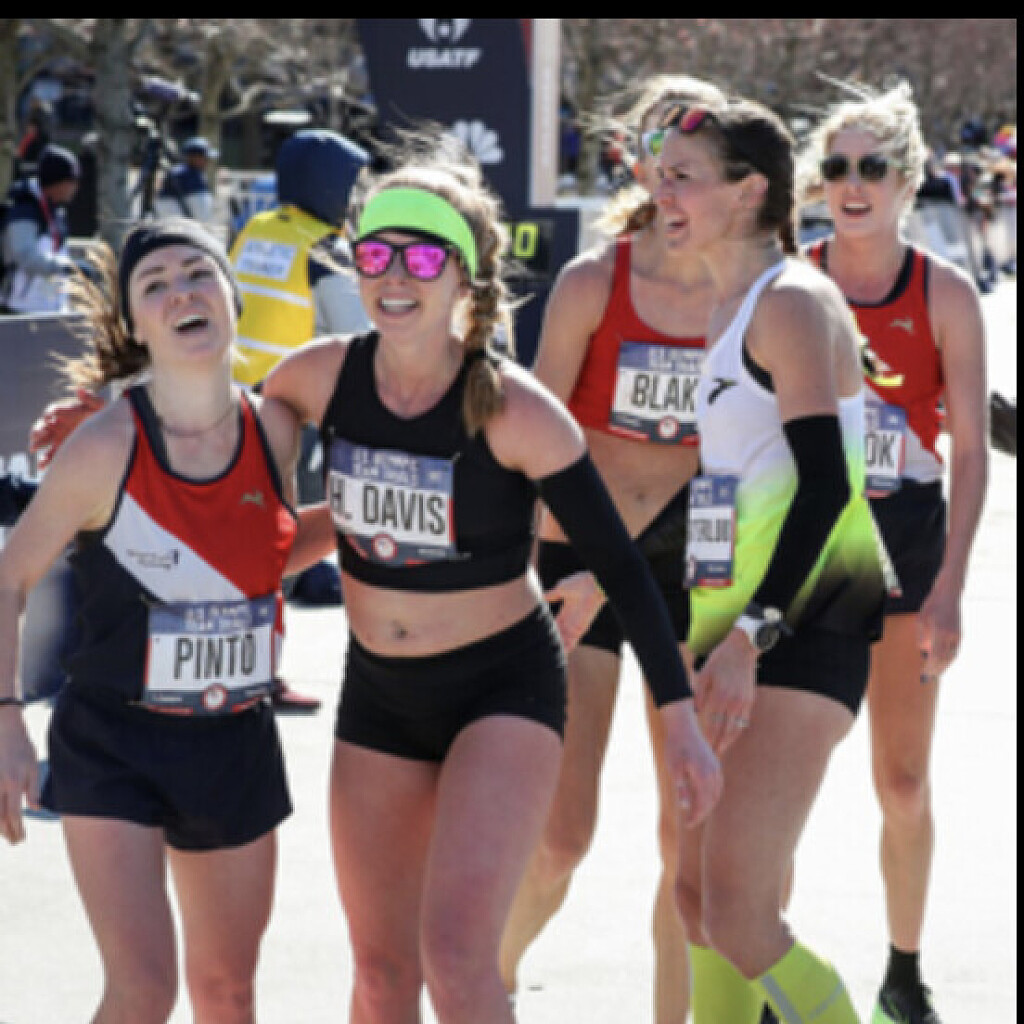Running News Daily
Running News Daily is edited by Bob Anderson. Send your news items to bob@mybestruns.com Advertising opportunities available. Train the Kenyan Way at KATA Kenya and Portugal owned and operated by Bob Anderson. Be sure to catch our movie A Long Run the movie KATA Running Camps and KATA Potato Farms - 31 now open in Kenya! https://kata.ke/
Index to Daily Posts · Sign Up For Updates · Run The World Feed
6 Ways to Be a Great Training Partner
These 2024 Olympians know how to help each other while keeping it fun.
Pianist Harold Mabern said that jazz is “competition without animosity.” He might well have been describing the running relationship of Conner Mantz and Clayton Young, who finished first and second, respectively, at the U.S. Olympic Marathon Trials in February.

That Mantz and Young are not just two guys who run together, but true training partners, became obvious over the second half of the Trials race. Zach Panning, who wound up finishing sixth, took the lead in the sixth mile and dropped the pace by more than 10 seconds per mile. Mantz and Young tucked in; by the 19th mile, when they were Panning’s only company, they slapped each other’s hands in an apparent celebration of making the team.
When Panning started to slow a few miles later, Mantz and Young pushed on ahead. With two miles to go, Mantz was visibly struggling. Young, looking great by comparison, repeatedly talked to Mantz and stayed with him rather than running the faster pace he looked capable of. In the closing strides, Young eased back as an exhausted Mantz heaved himself over the finish line, one second ahead of his training partner.
Seven years earlier, their first run together was also memorable. Both are members of the Church of Jesus Christ of Latter-Day Saints (LDS), the largest Mormon denomination. Many LDS members go on a one- to two-year mission in their late teens to early 20s. Even for members who are top athletes, the mission is primary; most do little to no training and gain a significant amount of weight.
In 2017, Mantz returned from his mission weighing 150 pounds, compared to his usual 120. A little more than a month later, down to 140, he showed up for his first day of practice with the Brigham Young University team. The group was doing an 8-mile tempo run a little slower than 5:00 per mile. “I held onto the pack for as long as I could,” Mantz recalls. “I almost made it 5 miles until I had to slow down.”
Young, who was in the pack, says, “When Conner stuck with us past halfway, I thought, ‘Oh my gosh, he’s only a month and a half off his mission. Conner is the real deal.’”
They began training together regularly in 2019, the year when Young went pro after winning the NCAA 10,000-meter title. Young remained in Provo to train under BYU coach Ed Eyestone, a two-time Olympic marathoner. While at BYU, where he won two NCAA cross country titles, Mantz mulled going pro. He initially stayed in Provo, but thought that he would soon move and join the Oregon-based Bowerman Track Club or another group. Instead, a few months became several months, then several months became a year. After Mantz ran 2:08:16 at the 2022 Chicago Marathon in his debut, he thought, “Alright, this is working.”
That’s an understatement. Here are six takeaways about being good training partners from Mantz and Young, who will run the Olympic Marathon in Paris on August 10.
Find people with similar goals and outlooks
Since their build-up for the 2023 Chicago Marathon, where both PRed (Mantz 2:07:47, Young 2:08:00), they’ve had near-identical competitive schedules. Mantz and Young typically run together six days a week. They do their main run of the day in the morning. Depending on their schedules, the two, who live a few miles away from each other, sometimes also meet for their shorter afternoon run.
Why don’t they run together seven days a week? Both run their 100-plus-mile weeks while devoting Sundays to their faith. Being an outlier in that regard was one reason that Mantz decided not to join a more formal pro group. “I knew nobody else would be taking Sundays off,” he says, “and that added to the list of reasons to stay here.”
Good training partners help you get more out of yourself
Mantz is a notoriously hard trainer. Young is probably better aware of that than anyone else.
“My best workouts are keeping up with Conner, but Conner’s worst workouts are staying with me,” Young says. “I can’t remember the last time I dropped him in a workout or a long run. That’s one of the beauties about working out with Conner—you really do get pushed to your limit. My workouts with Conner are usually far better than they would be by myself. I just have to make sure I don’t go too hard.”
But pace-pushing Mantz also benefits from having Young to gauge himself by.
“For the most part, I would be way worse on my own,” Mantz says. “I can put a lot of pressure on myself and run too fast early on. I’m all about, ‘Let’s run faster than we did at this point last build-up.’ I see it as I want to get better every day. It’s a little difficult, because I may have gone a little too hard in workouts over the last few years, and so now to even match what I did a year or two ago is quite difficult.”
Compare yourself to you, not your training partners
“There are definitely workouts where Conner is totally trashing me the last interval,” Young says, “and I just have to say, ‘Okay, I did what Coach said and I’m faster in February 2024 than in February 2023. I just really need to compare myself with myself.”
If, like Young, you have a training partner who likes to hammer, do like Young and listen to what your body is saying on that day.
“Typically, Coach will give us some splits he thinks we should start at,” Young says about hard workouts. “But it’s not uncommon for Conner to go faster than those splits, and so I have to do these mental gymnastics of, ‘Do I go with Conner or do I do what Coach said?’ Conner and I are obviously really competitive, and you get a lot of confidence training with one of the best athletes in the marathon, so should I stick with what feels good and with what Coach said, or should I try to close this gap and run with Conner? Sometimes I do, sometimes I don’t.”
Share both the joys and the struggles
As pros, Young and Mantz are unlikely to come up with reasons to blow off runs. But we all need an occasional pick-me-up.
“If I’m not feeling good during a workout, I turn to Clayton and say, ‘You’re leading the next one,’” Mantz says. “And he’s always like, ‘Alright, I’ll help out,’ even if he’s also having a bad day.”
For many of us, meeting our running partners doesn’t just help us get out the door. Doing so is often a dependable source of pleasure. That’s as true for Olympians as it for the regular runners. “I just get excited sometimes thinking about the camaraderie and that I get to run with Clayton today,” Mantz says.
Acknowledge irksome behaviors but keep them in perspective
Some days with your training partners won’t be exciting or fun. You might even find yourself wishing you were running alone. But as with a romantic partner, it’s the overall quality of the relationship that matters.
“There are times I’m like, ‘Conner, why did you go that fast? I thought Coach said to do this,’” Young says. “I can get frustrated. But at the end of the day, it’s making me faster. As long as I recognize that balance and look at the big picture, having Conner with me as a training partner far outweighs the little frustrations that I have every now and then.”
Use your time together to improve your lives
Like a lot of us, Young and Mantz spend a good amount of their running time talking about running—how their most recent workout went, what races they have coming up, how the BYU team and other top runners are doing, what the weather will be like on their next hard day. But, says Young, “we’re kind of unique professional runners in that we have a lot of stuff going on outside of running. So we’ll also talk about family, real estate, investments, taxes.”
Mantz, who at age 27 is three years younger than Young, has used a lot of their run time to discuss marriage. “That’s the biggest benefit of having Clayton as a training partner—asking questions and getting advice on things like adjusting to having somebody in your life at a new level,” he says.
Young, who had knee surgery less than a year before making the Olympic team, says, “We’ve gone through some tough stuff. We’ve been able to lean on each other a lot. Our runs together are often like a therapy session.”
by Runner’s World
Login to leave a comment




